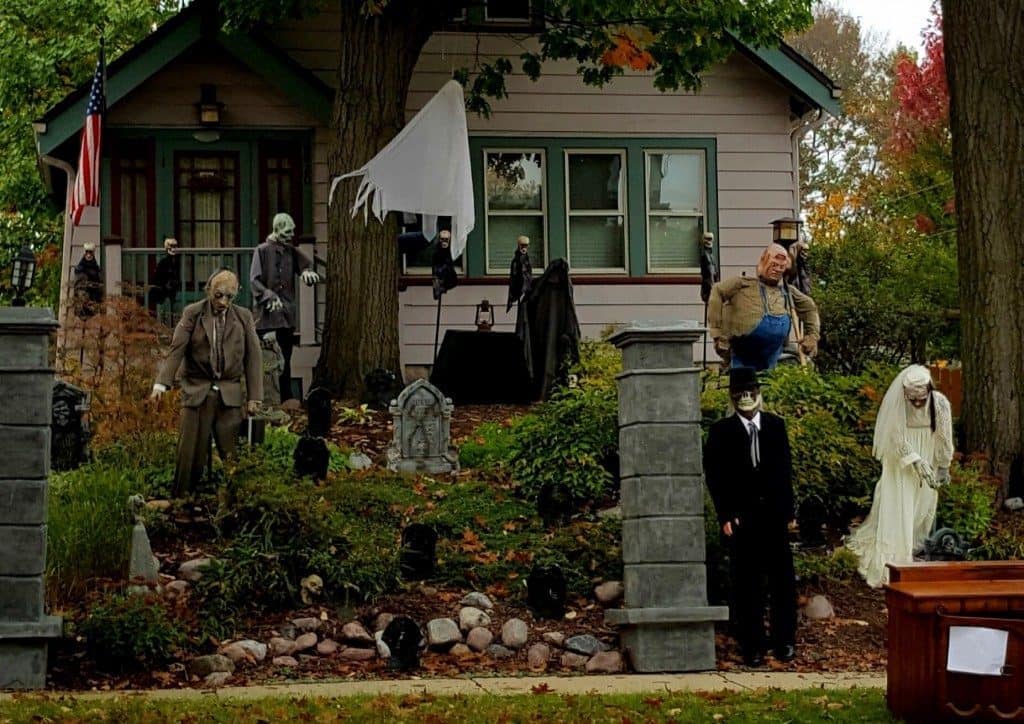It was a beautiful October afternoon in Milwaukee. The colors of the fall leaves were a spectacular mixture of red, orange and yellow. It was Saturday and everything was great, that is, until I drove by several houses decked out for Halloween. Front lawn after front lawn was transformed into macabre scenes of death. Life-sized plastic figures of decomposing bodies, some with knives stuck in their heads, fake cemeteries with arms sticking out of the ground, skeletons and ghosts all made otherwise beautiful homes look like a scene from Michelangelo’s “The Last Judgement” (the frightening Hell part, at least). You’ve seen it. You know what I’m talking about. Imagine such a front lawn scene outside the context of the “It’s all in good fun!” season of Halloween. No one would think that is funny. They’d be disturbed by them, and rightly so.
The “It’s all in good fun!” line only goes so far. And since when was “fun” the primary determinant for what is right? Are glorified scenes of death and gore, and even not-so-subtle hints of the occult, the kind of images kids (let alone the rest of us) should be exposed to? How often does the devil use plain old “fun” as an access avenue to souls? How can the gory, gruesome glorification of death (which the Church teaches is the result of sin and separation from God) be a good thing?
Like many great artists in the Church’s history, Michelangelo showed us Hell, but he did so within the complete context of Church teaching on the Four Last Things: death, judgement, Heaven and Hell. Devoid of any theological context (and taste, by the way) these awful front lawn death scenes are powerful indicators of a post-Christian culture.
*Featured image: Michelangelo’s “The Last Judgement”


